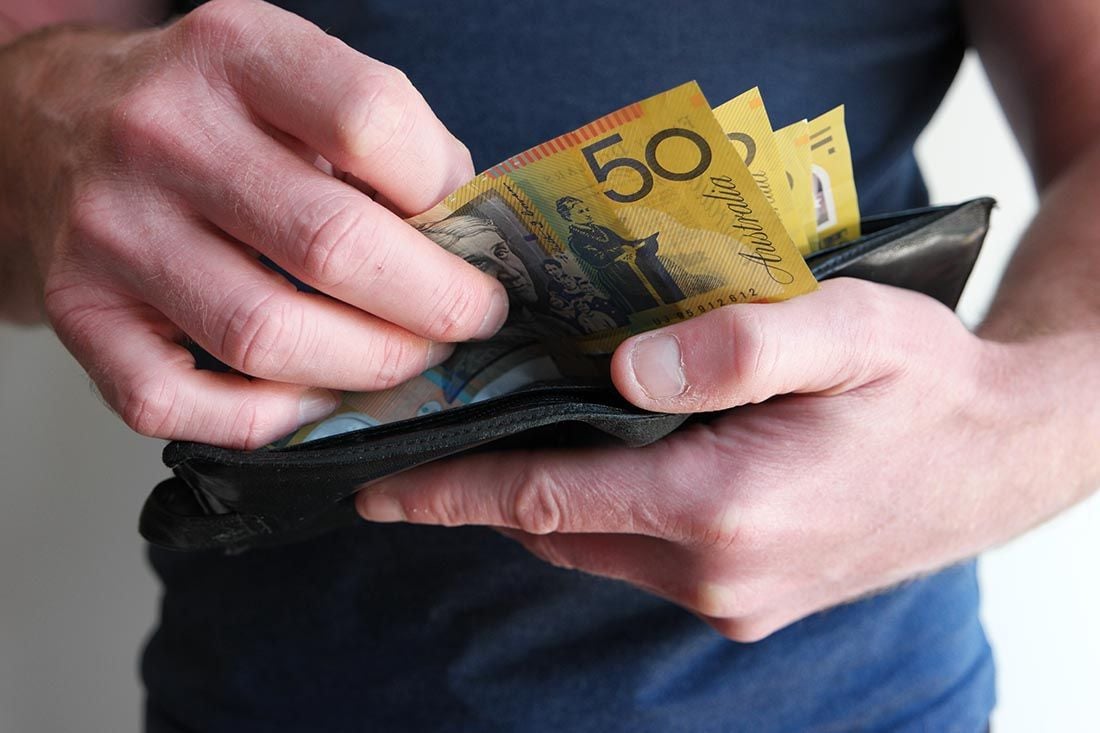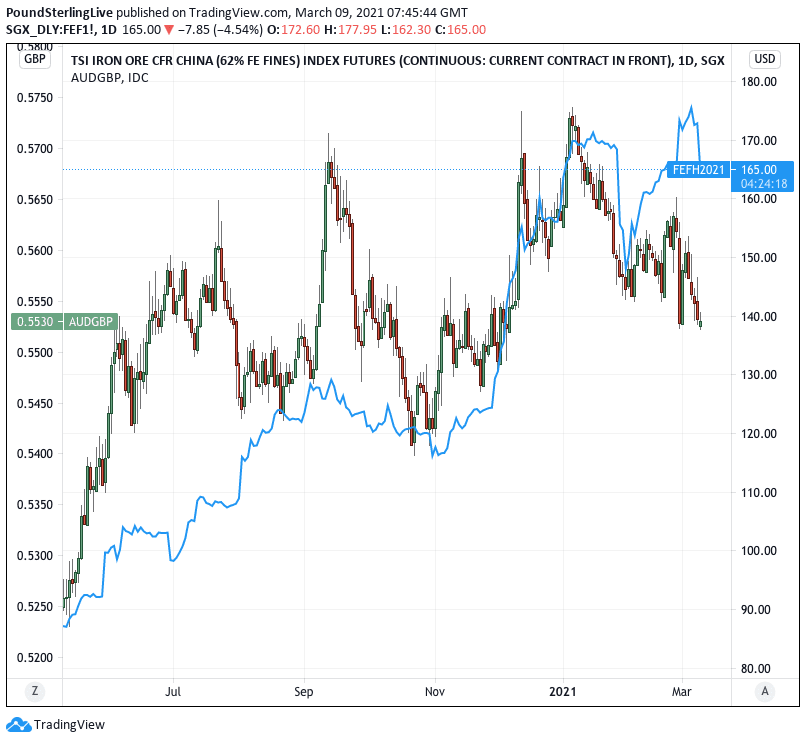Pound-Australian Dollar Rate at Three-month Best on Iron Ore Price Slump

Image © Adobe Stock
- GBP/AUD spot rate at publication: 1.8052
- Bank transfer rates (indicative guide): 1.7420-1.7547
- Transfer specialist rates (indicative): 1.7590-1.7926
- Get a specialist rate quote, here
- Set up an exchange rate alert, here
The Australian Dollar fell to a new three-month low against the British Pound and will likely remain under pressure as long as iron ore prices struggle, according to analysts we follow.
Iron ore, which is Australia's main export and foreign exchange earner, has fallen sharply in value on Tuesday amidst unexpected iron production cuts announced in China which could signal an end to the commodity's bullishness on international markets.
The move corresponded with losses for the Australian Dollar which had been one of the world's top performing currencies in 2020 thanks to the surge in value of bulk commodity prices, courtesy of strong Chinese demand.
"The hefty commodity-focus has provided a welcome boost over the course of the past year. However, recent weakness across the likes of copper, nickel, and iron ore has dealt a significant blow towards valuations of UK miners and the Australian dollar. Today has seen iron ore follow the recent capitulation in nickel prices, with a 8% decline in Australia’s biggest export dealing a blow to AUD," says Joshua Mahony, Senior Market Analyst at IG.
A number of Asian benchmark iron ore futures fell more than 3.0% on Tuesday to their lowest levels in two weeks, as anti-pollution restrictions in China's top steelmaking city of Tangshan pressured prices.
CN Wire reports the Municipal Government of Tangshan, the country's premier steel-making city, held an emergency meeting yesterday citing a production halt during March 9-11 to improve air quality.
The most-active May iron ore contract on the Dalian Commodity Exchange fell as much as 4.0% to 1,100 yuan ($168.43) a tonne, the weakest since Feb. 24.
Iron ore's front-month contract on the Singapore Exchange dropped as much as 3.2% to $162.10 a tonne, the lowest since Feb. 25.
Above: Iron ore contract on Singapore exchange (blue line, right axis) showing correlation with the AUD/GBP exchange rate (candles, left axis).
The declines come in the wake of a run of strength for the raw material as the benchmark 62%-iron ore commodity traded at $179.50 just last week, the highest level on record since 2012, according to SteelHome data.
Iron ore matters for Australia which ran a record trade surplus at the start of the year after the country earned more in exports than it imported, with iron ore being the main export engine.
"The Australian economy has been able to benefit from the rapid recovery in the Asian region and the resulting price rises for the commodities Australia exports, amongst them iron ore," says Antje Praefcke, FX and EM Analyst at Commerzbank.
But should iron ore prices decline then that trade surplus will likely ease back and with it investor enthusiasm for the Aussie Dollar.
"We expect the AUD to trend slightly weaker against the USD in the first half of the year," says Praefcke.
The Australian Dollar-U.S. Dollar exchange rate hit a high of 0.80 in late February but has since decline back to 0.7667, the Pound-to-Australian Dollar exchange rate has meanwhile risen on the back of Aussie Dollar weakness to trade at new 3-month high at 1.8113.
While the shutdown in Tangshan has been blamed on smog, it is also noted by some analysts that Chinese authorities have been concerned with the high price of iron ore for some time now and they could now be intervening which further complicates the outlook for the raw commodity.
"Iron ore prices also remain at levels that are leading to losses at Chinese steel makers, so officials continue to pledge a substantial cut in production in 2021," says David Forrester, FX Strategist at Crédit Agricole.
{wbamp-hide start} {wbamp-hide end}{wbamp-show start}{wbamp-show end}
Crédit Agricole's China economist expects China’s stimulus to slow in the second half of 2021 as the country tries to rein in leverage, especially in the residential property market, which will reduce China’s demand for commodities.
They also expect a rate hike at the country's central bank in the second half, adding further headwinds to Chinese economic activity.
"Supply interruptions out of South American copper and iron ore mines should also ease in H221 and ease upward pressure on Australia’s major export prices," adds Forester.
Forester says he expects the Australian Dollar to experience "a super-fast cycle rather than a superlong cycle", which he says means the currency will unlikely reach the heights of the post-GFC era.
The Australian Dollar peaked at 1.1080 AUD/USD in 2011, a time of surging commodity prices as China's economy underwent an infrastructure revolution.
Crédit Agricole forecast AUD/USD to end 2021 at 0.80.











